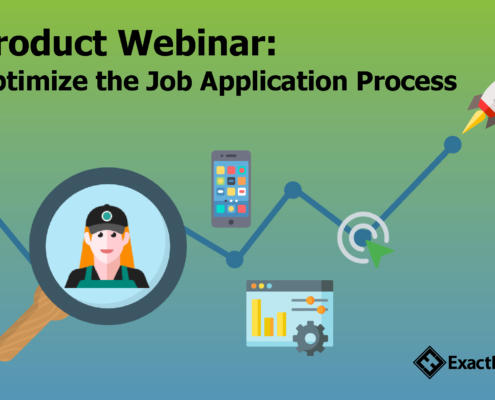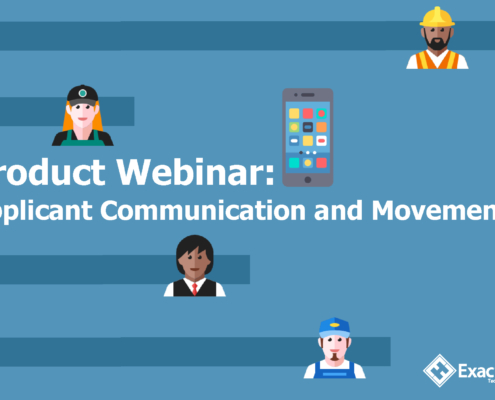7 Tired Excuses for a Long Job Application
So your customer service representative and retail associate jobs have been posted for weeks on end…but you still don’t have enough applicants to satisfy the general managers at all your retail locations.
What’s a recruiter to do? Maybe you should come to grips with the excuses your organization has been telling itself about why it keeps its lengthy, increasingly-obsolete job application.
You say, “but this application used to be a gold mine – ten years ago we were flooded with job applicants!” Well, ten years ago the recession gave you an employer’s market that made it easy to nurture your “woobie blanket” of an employment application.
It seems obvious that employers should regularly evaluate the effectiveness of their hiring process (and more frequently than once per decade); nonetheless, many organizations don’t put it at the top of the HR priority list…until their candidate pipelines have dwindled to a trickle.
Let’s examine the excuses that keep employers preserving their lengthy job applications.
1 – If they really want the job, they’ll complete it.
Once upon a time, this was more true. And, perhaps it will be sort of true once again as economic factors shift over time. In the meantime, your organization–however beloved it is in the eyes of your community–will never be so precious that it engages all of the top talent to complete a 52-question job application in a climate where unemployment is so low.
In fact, according to an Appcast study referenced by SHRM, job application completion rates plummet by nearly 50 percent when an application has 50 or more questions rather than 25 or fewer questions. Others say the impact is worse–Indeed research suggests that employment applications with just 20 screener questions lose 40% of candidates, with abandonment rate increasing as more questions are added.
2 – It’ll be too much work to screen later.
Recruiters and HR professionals understand that if you ask fewer questions up front in the job application, then you have less information to go by when it comes to screening candidates. You may be concerned that it will take too much time to ask these repositioned questions at the interview stage of the hiring process.
However, your lengthy job application is going to dramatically decrease the number of candidates you will put through your hiring process–so, you may have some free time for extra screening on your hands.
In this market, you must decrease your application complexity because the opportunity cost of a long employment application is more time sourcing more candidates because there isn’t enough talent in the pipeline.
3 – Our application “isn’t that bad.”
You agree that a 50+ question application is ridiculous and are giggling alongside me as you read this blog. Of course we can’t expect reasonable job seekers to waste their time on that fool’s exercise!
But wait, when was the last time you actually pretended to be a job seeker and applied to your own company? Hmmm….
Have you ever counted all the fields and questions in your employer’s job application? Go do it now, I’ll wait.
What’s that you say? There are…28 questions for the cashier job at your store?!?
Test your own job application with regularity–at least once per year, if not more frequently, as you notice significant changes in your application rates.
4 – We don’t have that many mobile job seekers.
Should no one in 2019 say ever. You’re in denial about the massive application abandonment rate you experience with mobile job seekers until the Google Analytics statistic of 70% is staring you in your face. Yes, at ExactHire we’ve seen abandonment that high with prospective employers who have not yet implemented a mobile-friendly, reasonably brief, job application.
Remember, an already lengthy application becomes an absolute beast on mobile and tablet views with smaller screens and ample finger pinching, scrolling and zooming.
By reducing the length of your application to appeal to the mobile job seeker, you also stand to improve your diversity and inclusion efforts. According to Pew Research done in the past 5 years, “black and Hispanic smartphone owners are especially likely to use their phone for job-related activities – more than half (55%) used their phone in the past year to find job information, compared with about a third (37%) of whites.”
5 – HR will yell at me.
You think your job application has to be long because Dolores Umbridge in human resources will stalk you if you deviate from the standard.
While certain industries and organization sizes require specific compliance-related questions, there aren’t so many requirements that your application should be painful to complete.
You should absolutely stick to applicable employment law when it comes to questions related to criminal history, pay history, employment eligibility, required licensure, voluntary self-identification, etc. (it will vary depending on employer size, location, contractor status, and industry).
But, that doesn’t mean you need to collect references on the first step of the application. Remember, your job application helps to form the first impression of your organization…do you want that impression to be one riddled with red tape and inefficiency?
6 – Everyone gets the same job application.
“Well, this is the way we’ve always done it.”
You feel compelled to have every job seeker, regardless of position interest, complete the same, one-size-fits-all application. It feels safe, right?
You can have different job application versions to meet the needs of different job categories and locations. And, our ExactHire applicant tracking software makes it a cinch to customize and manage application templates. After all, not only do questions sometimes vary depending on state, but the knock-out questions that you’d present an hourly worker are probably different than for a white collar executive.
7 – I don’t know which questions to ask at which step.
You’re starting to relent in your desire to preserve your lengthy job application. Fantastic!
Now you must figure out which questions to ask at which stage of the hiring process. First, examine your existing job application and consider questions that you really don’t need to ask in the initial step. Keep only the deal-breaker questions.
Deal-breakers for hourly positions at a retail location may be as simple as evaluating
- which shifts the candidate may fill,
- whether the candidate is available to work overtime, and
- whether the candidate has reliable transportation to and from work.
Don’t be afraid to go to your general managers and ask them for the short list of questions that actually matter when they consider someone for this type of position. Of course, your short list will likely vary quite a bit when considering questions for your general manager positions.
No more excuses for your employment application
Be aware of these seven excuses so you can keep your organization from falling back into the trap of the dreaded, lengthy job application.
By regularly evaluating your application fulfillment rates and testing your own application versions for different job categories, you’ll increase the number of qualified candidates in your recruitment pipeline. You’ll improve your employment brand, too.






